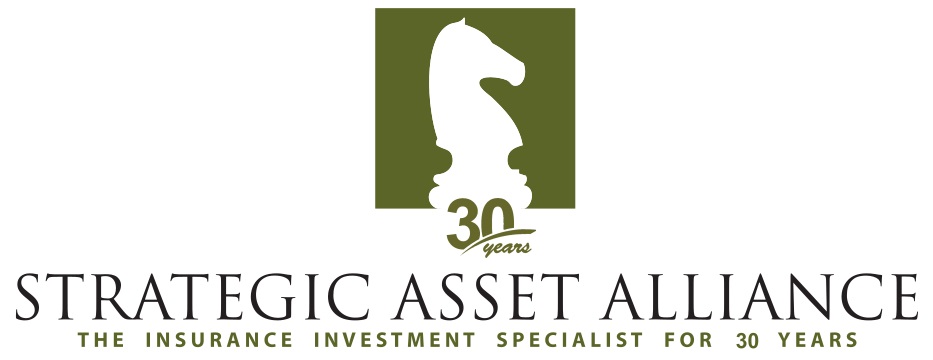Private Credit: Are its (Potential) Benefits Accessible to Insurers and Risk Pools?
We spoke with Capital Dynamics for an overview of Private Credit, it's potential benefits to insurers and risk pools, the current state of the asset class, and possible ways to access to it.
Thomas Hall
| Senior Managing Director, Co-Head of Private Credit |
Capital Dynamics
thall@capdyn.com | www.capdyn.com/
SAA: First, what is private credit?
Capital Dynamics: Capital invested in the form of loans to privately-owned companies that otherwise would not have access to funding through public market offerings, such as the sale of stocks, bonds, or publicly-rated syndicated loans. This debt, typically in the form of secured loans or unsecured mezzanine debt, combined with equity, form the company’s capital structure.
Secured loans, where Capital Dynamics focuses, have a priority claim on the cash flows and the assets of the borrowing company. These secured loans can be senior (also called first lien or first out), which ranks first in repayment priority, or junior/subordinated (also called second lien or last out), which ranks second, usually behind a senior loan provided by a commercial bank. The balance of senior and subordinated debt versus equity is unique to each company and is determined by a number of factors including what lenders are willing to provide as well as the company’s evaluation of loan terms and other business factors.
Generally, private credit is broken into four key groups:
- Direct lending – lenders providing capital to small and medium sized businesses in the form of senior secured loans
- Mezzanine – a private unsecured loan subordinated to a senior secured loan but senior to equity
- Venture debt – loans provided to companies, often start-ups with low or negative free cash flow, which are bundled with equity or an option to buy equity at a later date
- Distressed debt – debt of companies with an impending or actual covenant default or liquidity problem
SAA: What are some (potential) key benefits to investing in private credit?
Capital Dynamics:
Increasing opportunity set and attractive market dynamics:
- The significant rise in private equity dry powder in recent years is expected to fuel continued transaction volume in the middle and lower middle markets, creating opportunities for private credit providers offering tailored financing solutions to private equity owned small businesses.
- Traditional lenders to middle market companies, such as commercial banks, have decreased their participation in the space creating a substantial void that is being filled by non-bank lenders.
- For the second time, the first being the financial crisis, private credit is set to act as a safe haven for investors after a meaningful dislocation in the regional banking sector in early 2023.
Non-correlated asset class:
- Correlation across liquid / public investments strategies has increased since the 2008 financial crisis, challenging conventional portfolio diversification/construction strategies.
- Institutional investors are attracted to private credit as returns typically outperform most liquid fixed income indices with the added benefit of having low correlation with other asset classes.
- Additionally, private credit is viewed as having superior protections versus traditional bonds while delivering equity-like returns.
- Yield/Return premium to public markets.
Strong risk-adjusted returns
All-weather strategy, including through times of rising and elevated interest rates:
- Floating rate loans provide a hedge against rising interest rates
SAA: What is the current state of private credit and the outlook on the asset class?
Capital Dynamics: The second quarter saw an improving tone across debt and equity markets as the Federal Reserve’s aggressive rate hiking campaign showed signs of success in bringing down inflation. The economy proved resilient, despite headwinds from higher borrowing costs and still elevated inflation, posting an estimated 2.4% annual growth rate for the quarter. Labor markets also remained tight with continued record low unemployment reads, substantial increases in participation rates, and close to 9 million unfilled job openings, which is providing support for consumer confidence. Further, while the Fed appears far from declaring victory on the war on inflation, signaling that rates are likely to be higher for longer, market consensus is shifting toward the expectation that the economy will enjoy a soft landing. Economists’ calls for a recession have subsided or have been postponed to later in 2024 or early 2025.
Despite the constructive backdrop, Capital Dynamics remains cautious in how we are investing in private credit in this environment. Subtle changes in consumer purchasing patterns and increasing levels of consumer debt and debt delinquencies suggest that household balance sheets, replenished from subsidies and lack of opportunities to spend during COVID, are starting to deteriorate. Default rates have been rising as borrowing costs continue to increase and demand moderates. Lower leverage levels among lower middle market borrowers (average of sub 4x versus higher than 6x in larger market borrowers) should mitigate the impact of some of these pressures, but prudent private credit investors should remain focused on these concerns when making new investments.
That said, following two quarters of muted activity, leveraged buyout transactions accelerated in the second quarter of 2023. Improved sentiment, a rebound in valuations, and record private equity dry powder helped fuel the growth. A retrenchment by some market participants, including commercial banks and some non-bank lenders, has reduced competition and enhanced lenders’ ability to dictate structures and pricing. Underwritten leverage levels have declined, investor protections have improved, and pricing has seemed to stabilized into an attractive level where senior secured loans are now earning low double digit cash yields driven by increasing base rates (Sofr) and credit spreads in excess of 600bps.
SAA: What are the unique characteristics of sponsor-backed, US Lower-Middle market direct lending?
Capital Dynamics: The middle and lower middle markets represent a unique segment of the economic landscape that has long been considered the backbone of the U.S. economy. Conceptually, middle market companies fall between small “mom and pop” businesses and large multinational corporations. However, the parameters used to define and stratify the middle market vary, and there is no universally accepted range that defines a middle market company or delineates between a “lower middle market” or an “upper middle market” business. Regardless of the parameters, middle market companies span all industries and represent a significant proportion of the US economy. As discussed below, they account for a significant share of job creation and are generally among the fastest growing businesses. As a result, middle market companies have long been an area of focus for private equity and private credit investments. Aside from the depth and breadth of the opportunity set, investing in lower middle market companies also provides an opportunity to have an impact on society by supporting ESG conscious companies that are increasing employment, investing in their local communities, and contributing to sustainable recovery of the US economy, particularly in the post-COVID-19 era.
Capital Dynamics defines the middle market as the segment of the economy that includes businesses with earnings before interest, taxes, depreciation, and amortization ("EBITDA") between USD 5.0 and 75.0 million (or annual revenue between USD 10.0 million and USD 1.0 billion, as defined by the National Center for the Middle Market). In the US, there are over two hundred thousand (200,000) middle market companies, which employ almost forty-eight (48) million people and cumulatively represent one third of private sector GDP. As such, on a combined basis, these companies would form the third largest economy in the world. Importantly, these companies have proven to be resilient throughout changing economic environments, as evidenced by the addition of 2.2 million middle market jobs during the financial crisis between 2007 and 2010. In the years since the financial crisis, middle market employment and confidence have surged. Despite the COVID 19 pandemic, the US middle market saw unemployment decline 4.4% in the year ending June 2020, compared to the overall US unemployment rising from 3.5% in January to eleven percent (11%) in June1. The resiliency of the middle market in times of disruption has historically been demonstrated and continues to be demonstrated as companies continue to expand their businesses, primarily through innovation, over the past twelve (12) months2.
1 Source: U.S. Bureau of Labor Statistics.
2 Source: National Center for the Middle Market "Mid-Year 2023 Middle Market Indicator" representing that 57% of firms introduced a new product or service, 39% expanded into new domestic markets, 25% added a new plant for facility, 18% have taken on new debt.
SAA: What are some of the ways that insurers and risk pools can access private credit?
Capital Dynamics: It’s a great question and one that we get often from insurance investors.
To start, it is worth acknowledging that most mid-to-large insurers have been long-term investors in different types of private credit, including US middle market direct lending, for years. In fact, many insurers view US middle market direct lending as a “core” holding within their risk asset or alternatives allocations. These insurers continue to allocate to private credit through funds, separately managed accounts and structured solutions.
Our experience has been that smaller insurers, many of whom have not yet invested in private credit, have a high degree of interest in private credit, but often look to managers, consultants and their regulators to better understand how to access the asset class. As with most questions in the insurance asset management space, the answer is that it depends on the insurers’ size, business line, objectives and constraints. For smaller insurers, we tend to see funds having the most appeal. Commitments to funds are the simplest solution from an operational perspective and can offer significant diversification for small commitment amounts. Other insurers, who may be seeking regulatory capital relief, have explored structured solutions.
Ultimately, we think it is important for insurers and risk pools to engage with their regulators, investment consultants and investment managers to determine the most appropriate path forward to access private credit.
Source: Strategic Asset Alliance, Capital Dynamics The information contained herein has been obtained from sources believed to be reliable, but the accuracy of information cannot be guaranteed.

